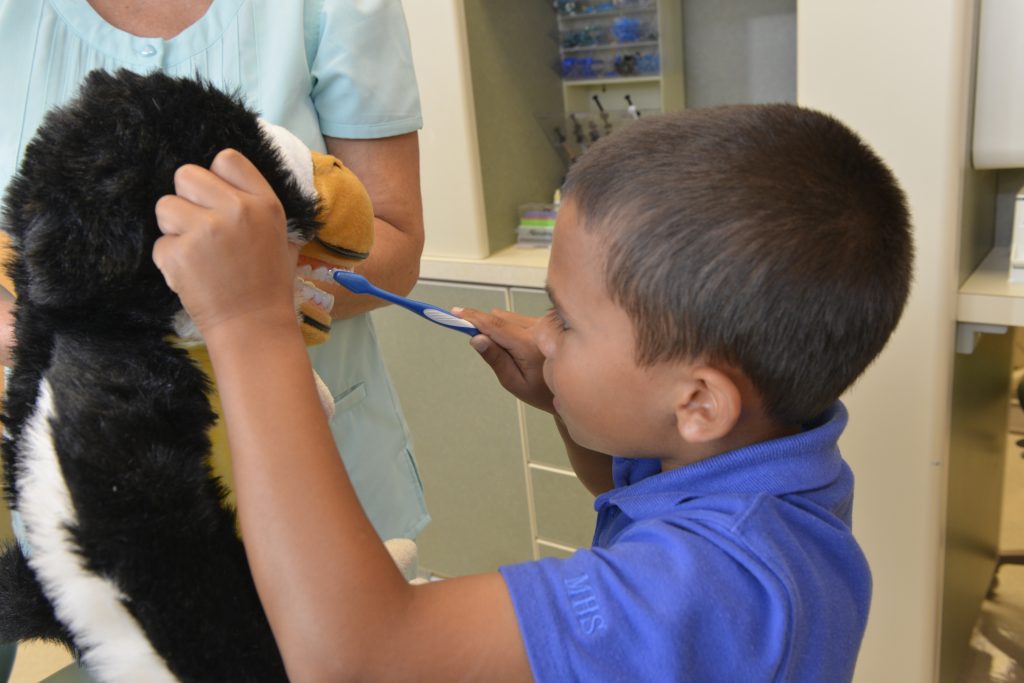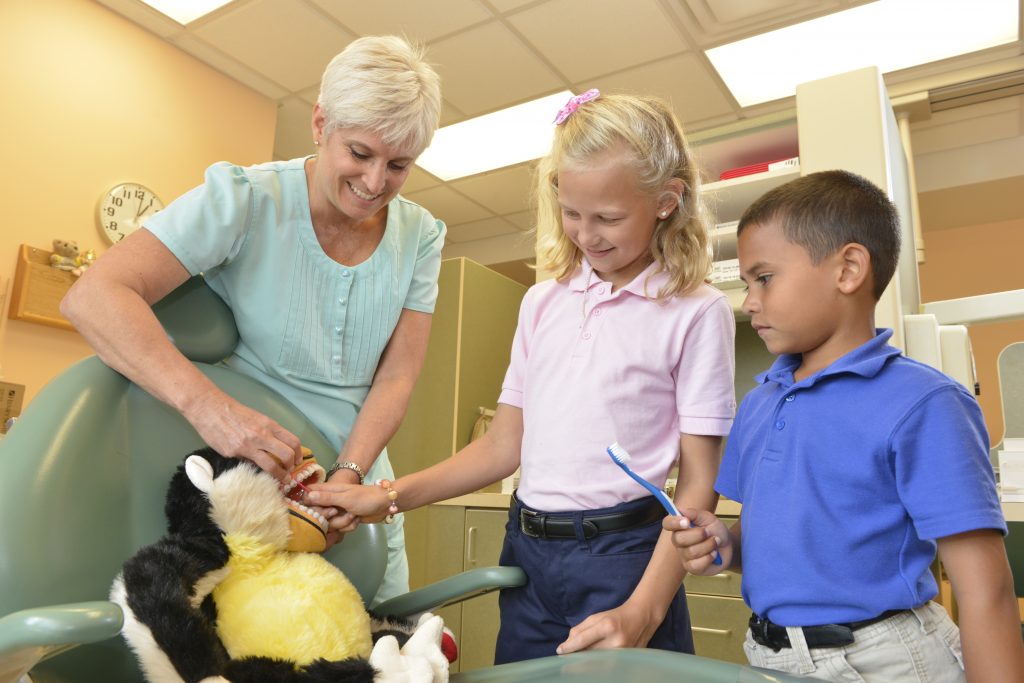Dental Services: Helping Children Brush up on Oral Hygiene
Featuring Dr. Denise Alston, MHS Director of Dental Services
What do you think about when someone mentions health epidemics? You may immediately think of the flu, meningitis or measles, but how often do you consider dental disease an epidemic?
Dr. Denise Alston, Director of Dental Services at Milton Hershey School, has worked in the public health sector her entire career. She has seen the health risks associated with poor oral hygiene, especially with children from poverty.
To shed light on the importance of oral health and the silent epidemic of dental disease, Dr. Alston shared her expertise in providing comprehensive dental care for children from low-income backgrounds.
Providing the Right Level of Care
According to the National Institute of Dental and Craniofacial Research, approximately 25 million people live in areas that lack adequate dental services. Many children living in these areas, which are often impoverished, have never experienced a regular treatment regimen.
“One of the most silent untreated epidemics is dental disease,” said Dr. Alston. “Your mouth is the gateway to your whole body.”
At MHS, Dr. Alston’s team provides dental services for the entire student body of more than 2,000 students. There are 19 total staff members, including six dentists, five hygienists, three dental assistants, four orthodontic assistants, and a dental office coordinator.
To start building a regular treatment routine and help lower-income children develop a long-term appreciation for dental health, dentists must provide comprehensive care – including dental exams, X-rays, cleanings, fluoride treatments, fillings, extractions, crowns, bridges and dental sealants.
Dental sealants are the plastic coatings dentists use to cover the grooves of molars, making them less susceptible to cavities. Because many children may need sealants on pre-molars or other teeth with deep grooves, Dr. Alston suggests sealing any tooth that might cause cavities down the road.
Cavities are one of the most common problems children from poverty face.

Overcoming Oral Health Problems through Education
Because many students from low-income backgrounds don’t experience routine dental care, they may suffer from gingivitis and untreated cavities. Diets high in sugar, acid, and carbohydrates can lead to additional health problems, including obesity.
Students also have a range of eating and snacking habits, and they may brush and floss at different frequencies. These types of factors affect their dental health, and sometimes, it’s simply a lack of knowledge that leads to health problems.
“Many children from poverty may not have the right education about how to brush properly and when to floss,” Dr. Alston explained. “Dentists need to get a baseline and help them create healthy habits.”
Some of these healthy habits include following a balanced diet. The Dental Services team is involved in nutritional counseling and suggests that youth eat self-cleaning foods such as apples, carrots, and celery. They understand many students enjoy sweets, so they encourage them to eat sweets with a meal instead of snacking throughout the day. This gives the mouth a break and gives it a chance to get back to a healthy pH level.
Many low-income children also can experience dental anxiety, especially if they aren’t accustomed to routine care. The dental team recommends building a rapport with children and using friendly terminology to reduce fear such as ‘vitamins’ and ‘cleaning and polishing.’

Showing the Long-Term Value of Dental Care
According to reports, many families living in poverty visit federally qualified health clinics that accept Medicaid. While these clinics provide quality dental care, they also experience a high volume of patients – mainly patients who don’t have the ability to visit the dentist until they experience pain from a serious or chronic condition.
“What amazes me is, young kids with chronic pain don’t usually realize what it’s like to be pain-free until after it’s fixed,” Alston said.
To find solutions and promote healthy dental habits, more research into the effects of poor oral hygiene in low-income families needs to be done. Through collaboration and knowledge sharing, the public and private sectors can come together to teach the long-term value of dentistry.
“If you can touch a child’s life and make them gain an appreciation for dentistry and having a healthy mouth, they’ll start to place a high value on dental health that carries into adulthood,” Alston shared.

